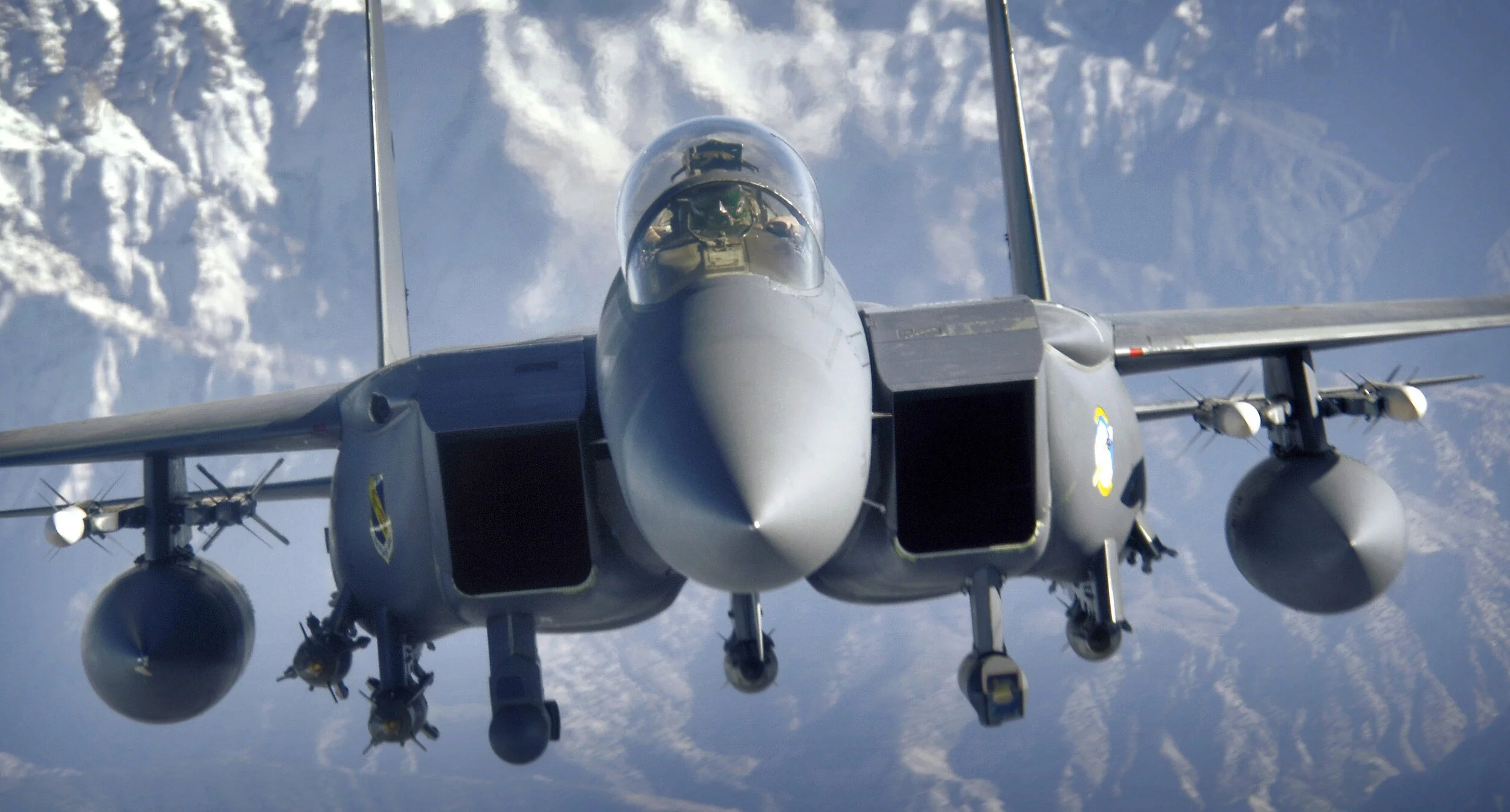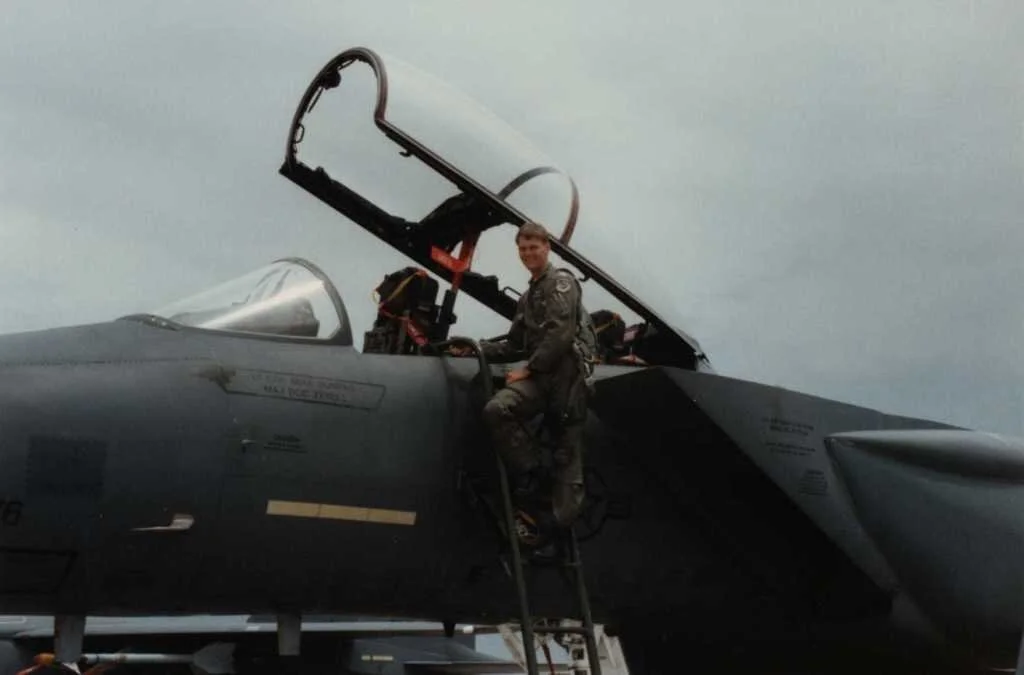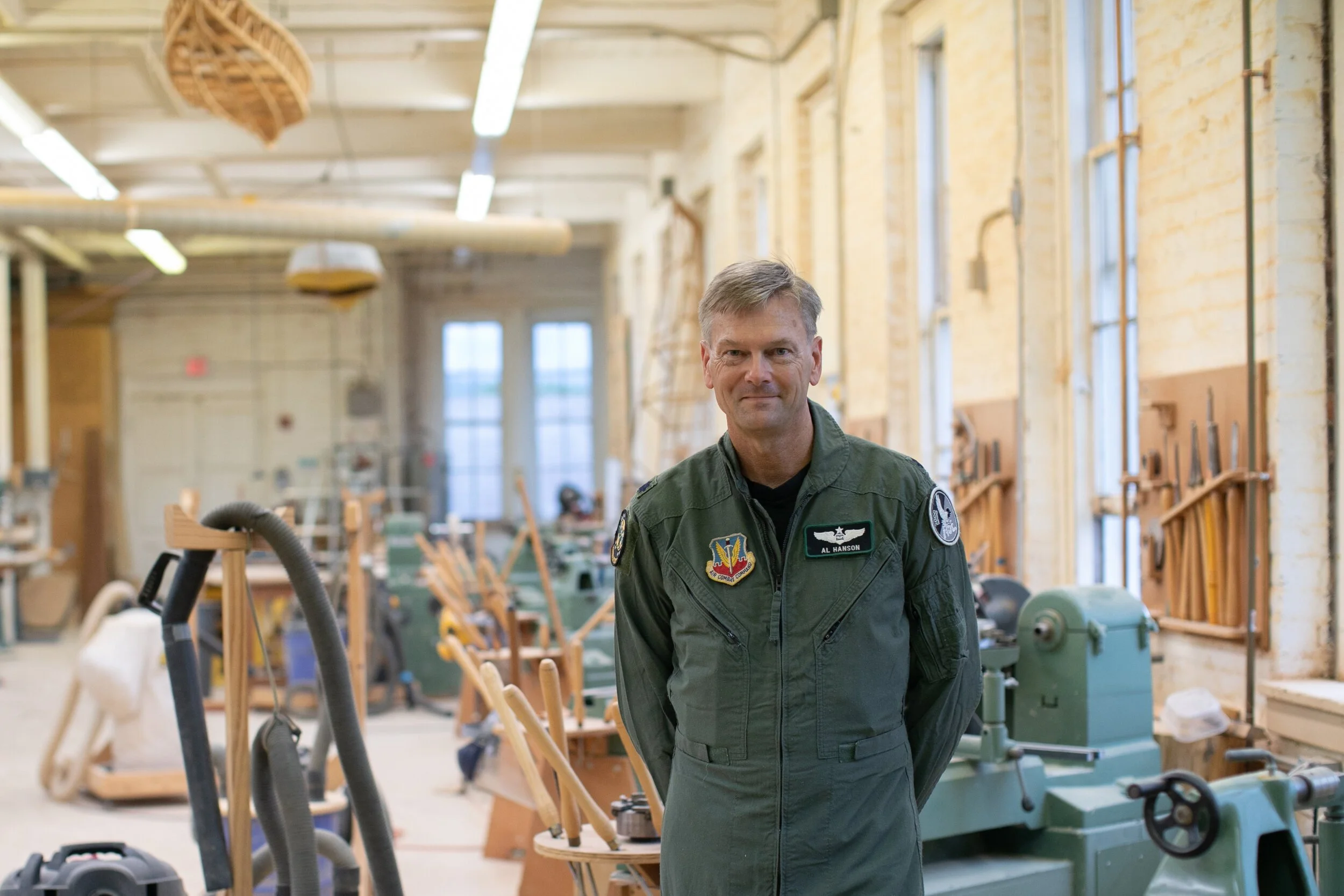Our Maverick
Lt. Colonel Al Hanson, Retired, flew the F-15 Strike Eagle Jet in the Air Force for 20 years before joining the faculty at MSA.
“I have a need...A need for speed.”
The 1986 film Top Gun, starring Tom Cruise as Naval Aviator LT Pete “Maverick” Mitchell, takes moviegoers into the cockpits of F-14A Tomcat fighter jets flown by the “best of the best” aviators in the highly selective TOPGUN flight school. Amazing scenes of F-14 Tomcats buzzing towers, flying inverted, and dogfighting near mountain cliffs have kept Top Gun viewers on the edge of their seats for over thirty years.
While some of the iconic flight scenes go Mach Speed into the realm of Hollywood fiction, the film’s presentation of the admirable characteristics of US fighter pilots is grounded in reality. The characters in the film are dedicated, intelligent, physically impressive, and loyal pilots who are willing to do “incredibly brave things” to serve their country.
MSA students don’t need a trip to the theater to find a wingman who is a real-life example of the “best of the best.” Miller has its own Maverick—he’s on the third floor of Caton Hall under the Bell Tower. There, Lieutenant Colonel Al Hanson, USA, Retired, can be found in his office adjacent to the woodshop where he teaches Design/Build. The views from his current office are as good as they get on campus, but pale in comparison with the views Mr. Hanson had while he was flying in the cockpit of an F-15E Strike Eagle fighter jet in the United States Air Force.
Al Hanson is a reserved and humble man. His dirty blonde hair and charming youthful appearance are accented by an easy smile and familiar drawn-out “hello” greeting. To us, he is a master woodworking teacher who enlightens students about the art of designing and building. However, to many of his closest friends, he is known only as “Hobo” and revered for his exploits at Mach Speed.
Mr. Hanson’s interest in flying took off his freshman year in high school. Inspired by his father, who was a civilian flight instructor during World War II and later served in the Army Air Corps, Mr. Hanson was steering an airplane before he was old enough to drive a car. During his early flights, he had to bring a pillow to sit on in order to see over the cockpit. With his father, he learned aeronautics and learned to love the freedom of soaring through the clouds. He took his first solo flight on his sixteenth birthday and was licensed to fly by his seventeenth. Mr. Hanson remarks with a chuckle: “I was the youngest pilot in the United States for a few days.”
After graduating from college in 1988, he entered Officer Training School. At this time, interest in becoming a pilot in the United States military had skyrocketed over 500% due to the popularity of Top Gun. This made what was already a highly selective path in the military even more selective. Fortunately, Mr. Hanson’s academic success and flying experience earned him a ticket to Air Force flight school. Knowing his imperfect eyesight would prevent him from being a pilot in the Air Force, he entered flight school as a navigator. For those familiar with Top Gun, this is the job of the character “Goose.” The combat navigator (or Weapons Systems Operator) sits behind the pilot and is in charge of mission critical systems on the aircraft such as surveillance, communication, weapons systems, and navigation. Mr. Hanson graduated at the top of his class and was one of the very first students assigned the brand new F-15E Strike Eagle jet.
At age twenty-five, Mr. Hanson was an officer in the Air Force flying the best fighter jet in the world. Thinking back on it, he remarked simply: “Ah, it was awesome.” Trained by Vietnam War veterans, he was prepared for combat. By the time he finished his F-15 combat training, the Air Force was sending planes to Iraq and Saudi Arabia. Mr. Hanson recalls: “On January 1, 1991 we started a new F-15E squadron (334 Tactical Fighter Squadron). Once we were trained and the squadron was declared to have met Initial Operational Capability, we deployed to the desert. The active fighting for Desert Storm was done, and we were there for Operation Southern Watch to enforce the no-fly zone. These deployments continued for a few years, each one two or three months.” His career began patrolling the danger zone above the oil fires in Saudi Arabia during the Gulf War and went on to span much of the globe. In total, Mr. Hanson spent over 2,500 hours in the cockpit of the F-15. The camaraderie and friendships formed with his fellow pilots are what he misses most today.
One of his fondest memories is from late in his career. In what is formally known as a weekend of training and testing aircraft systems, the Air Force essentially gives the keys to a 50-million dollar jet to the pilots for the weekend and says “have fun.” With the freedom to fly America’s best fighter jet anywhere in the world, Al Hanson chose to visit the man who first took him up into the sky. Mr. Hanson remarked: “I’ll never forget landing the F-15 on the runway with only my dad waiting at the end.”
Most of us at MSA don’t become Mavericks until we get here. But even before Al Hanson landed on the Hill, he was a Maverick just like Tom Cruise. It takes a special kind of person to fly an F-15, but fortunately for MSA, that’s just the kind of person who makes a great teacher.





